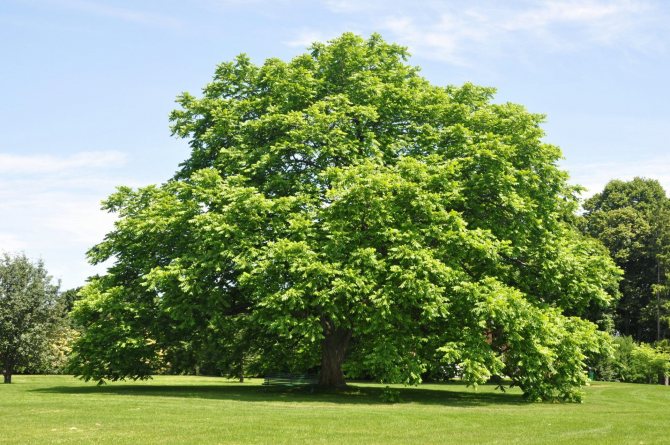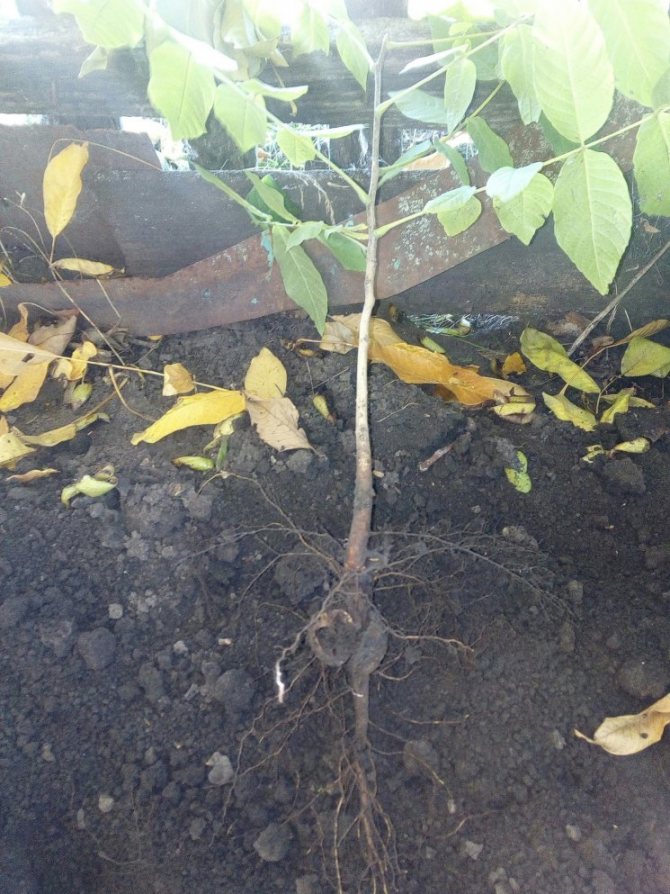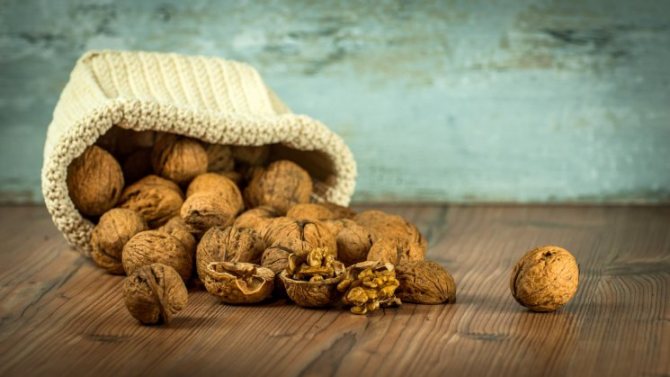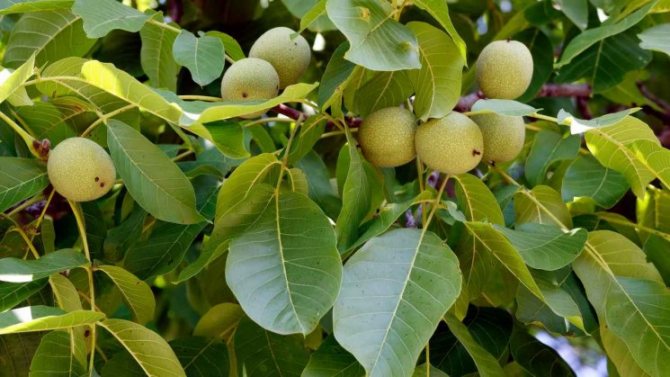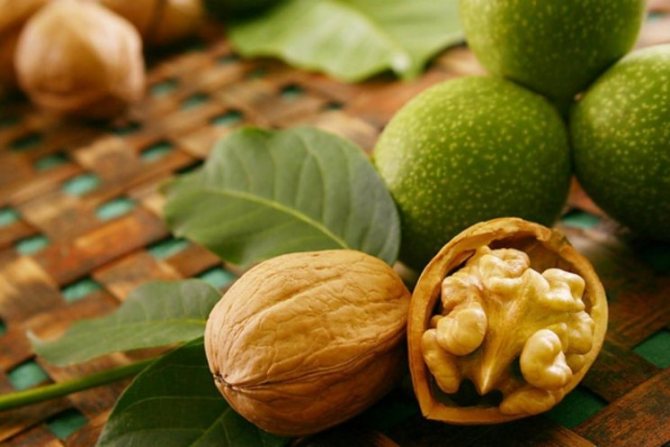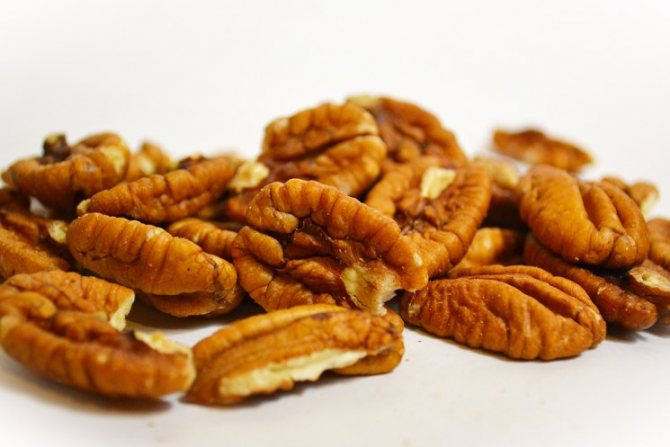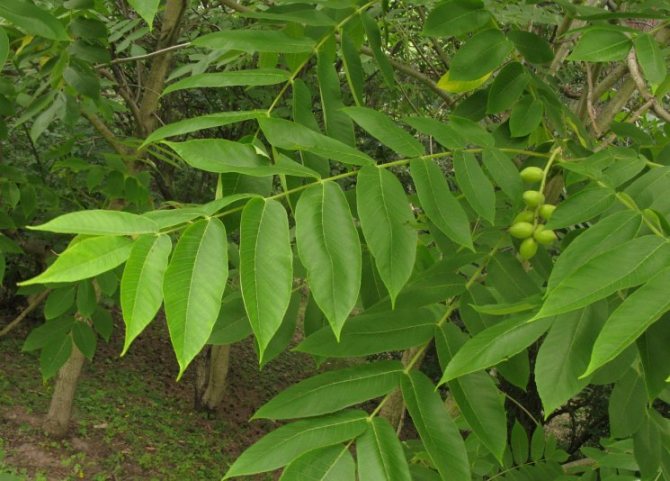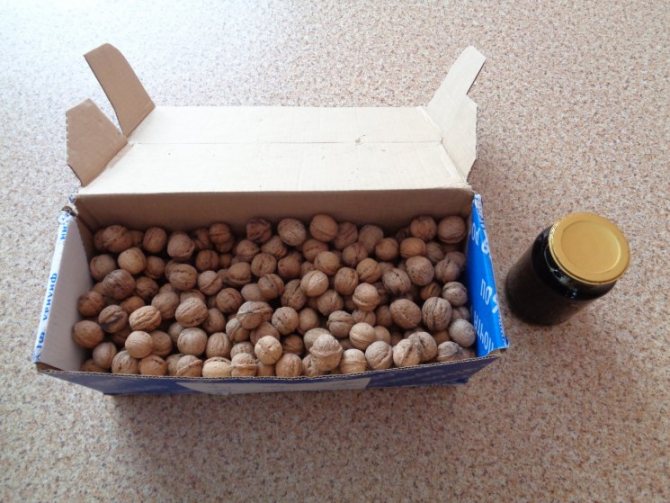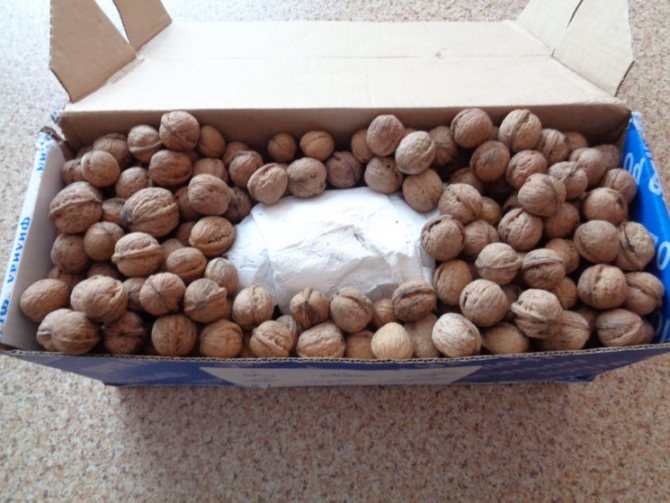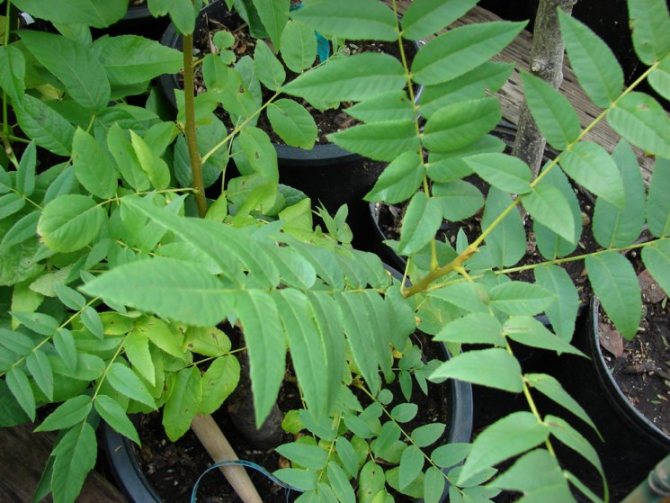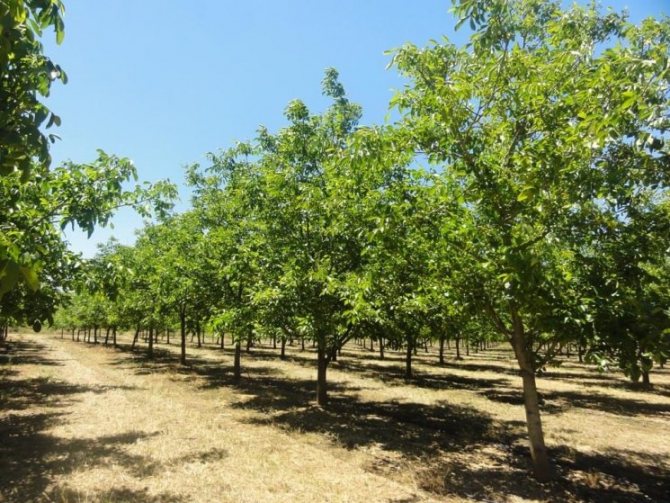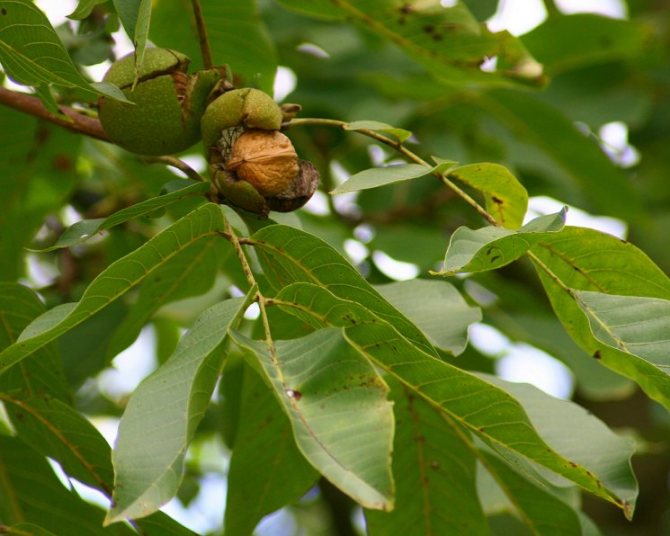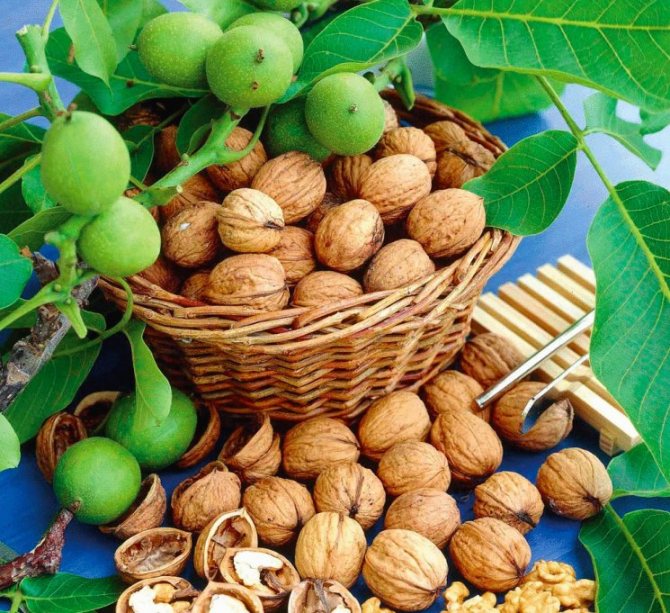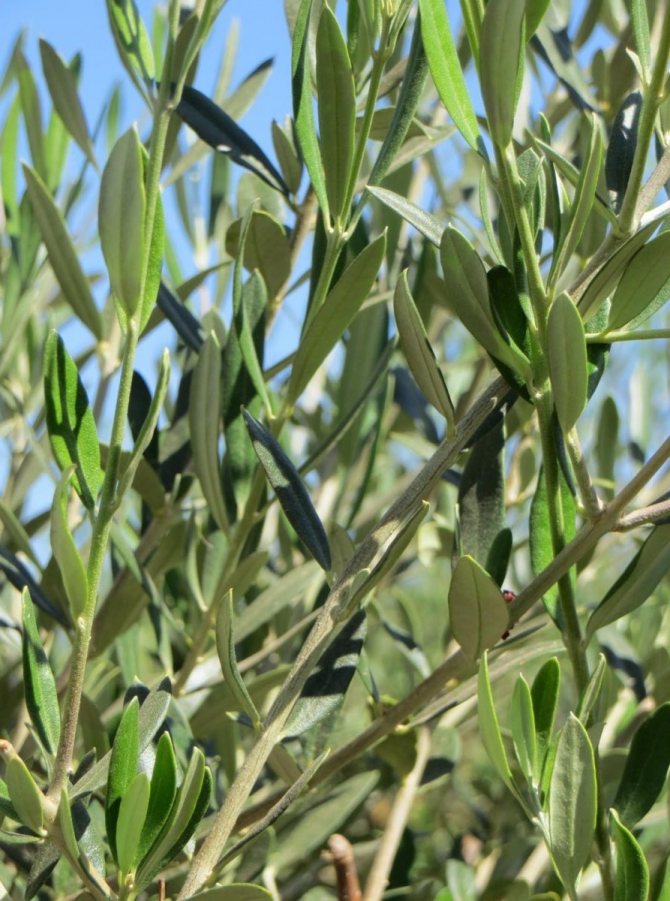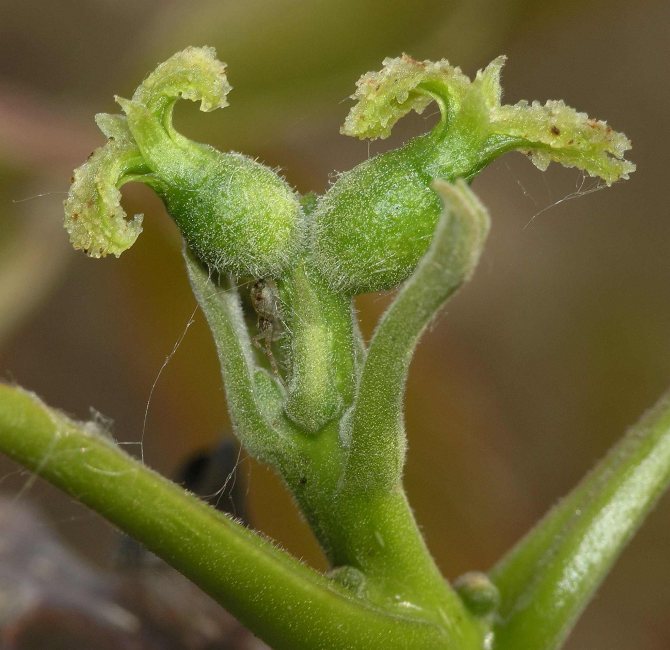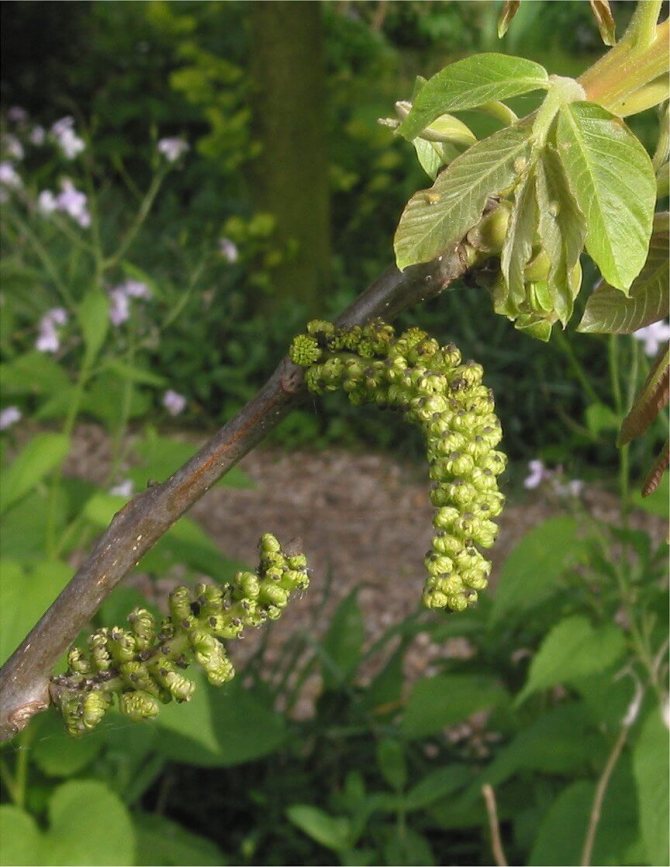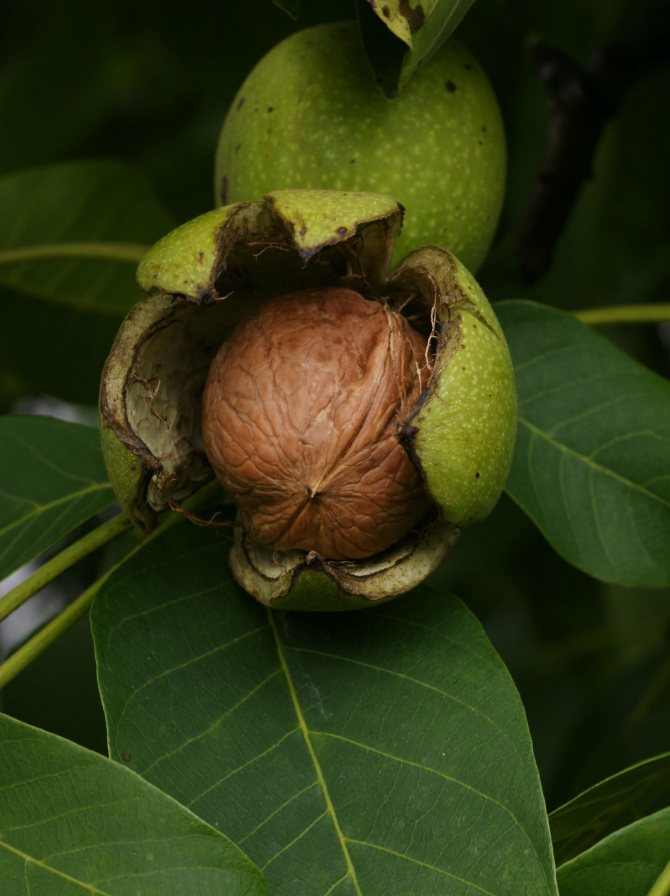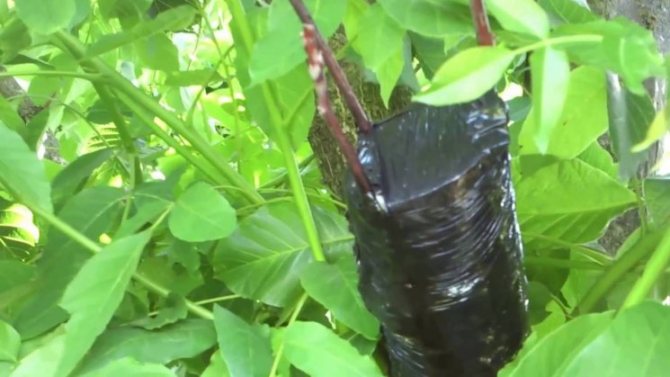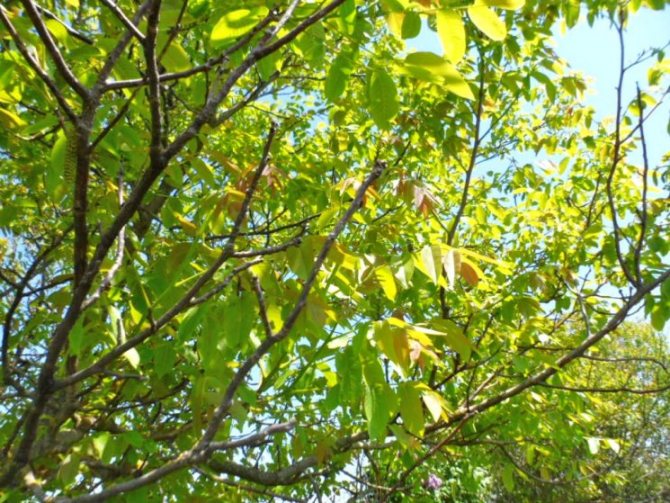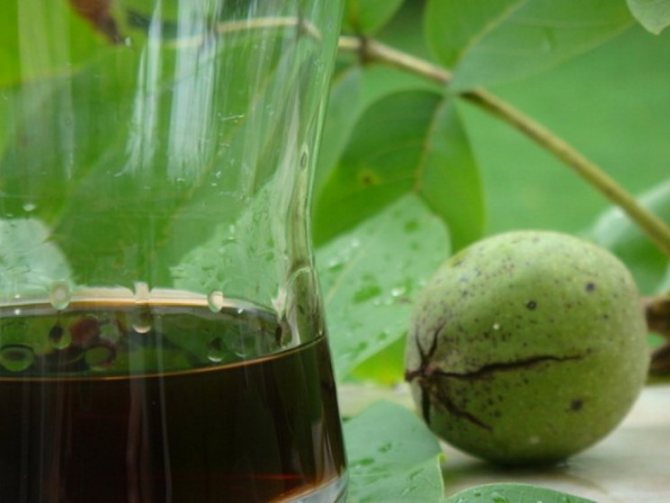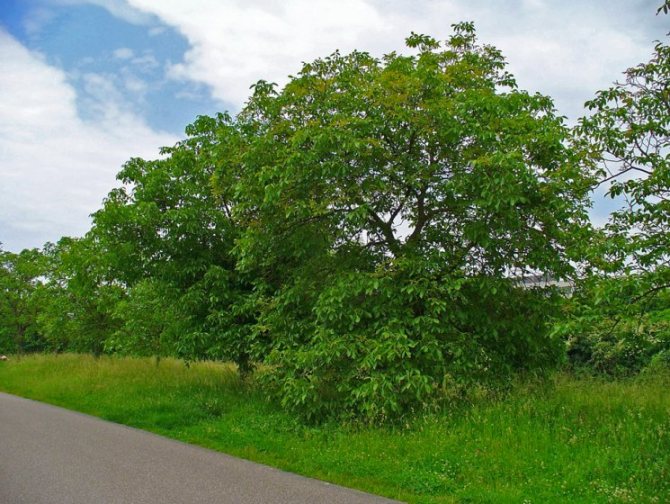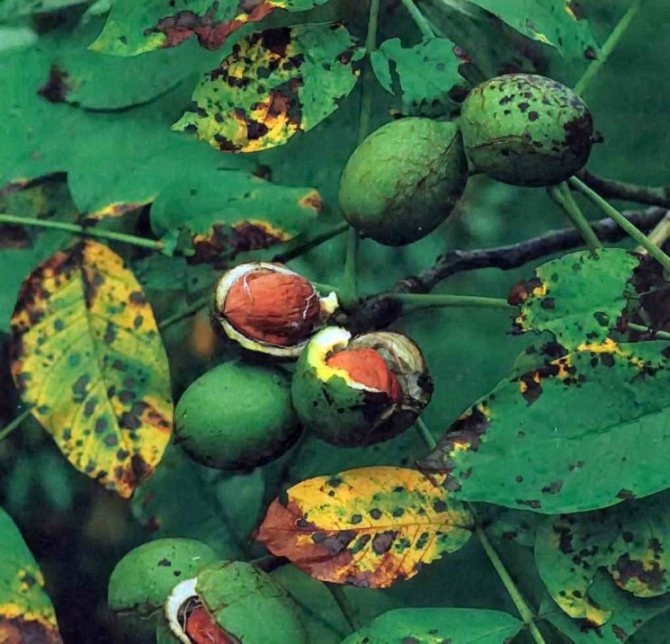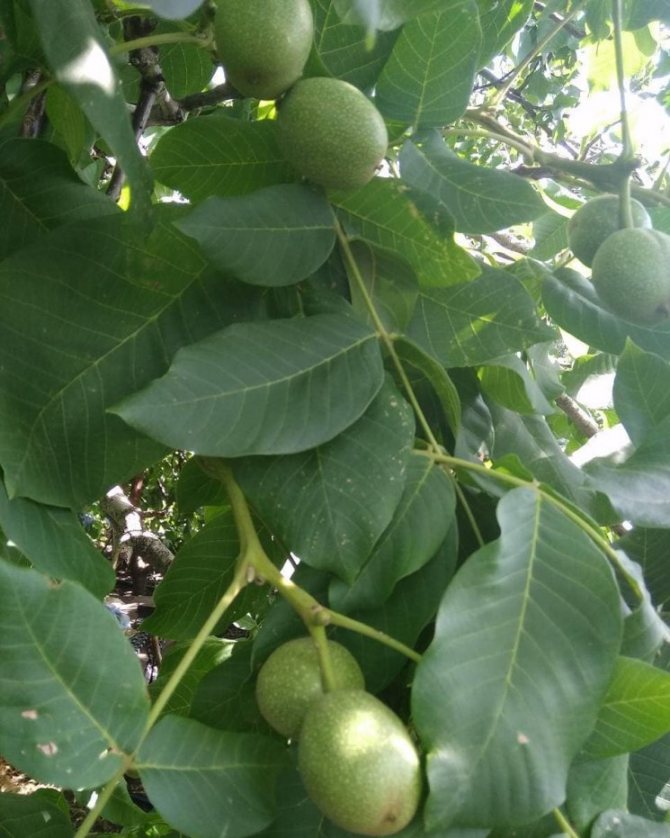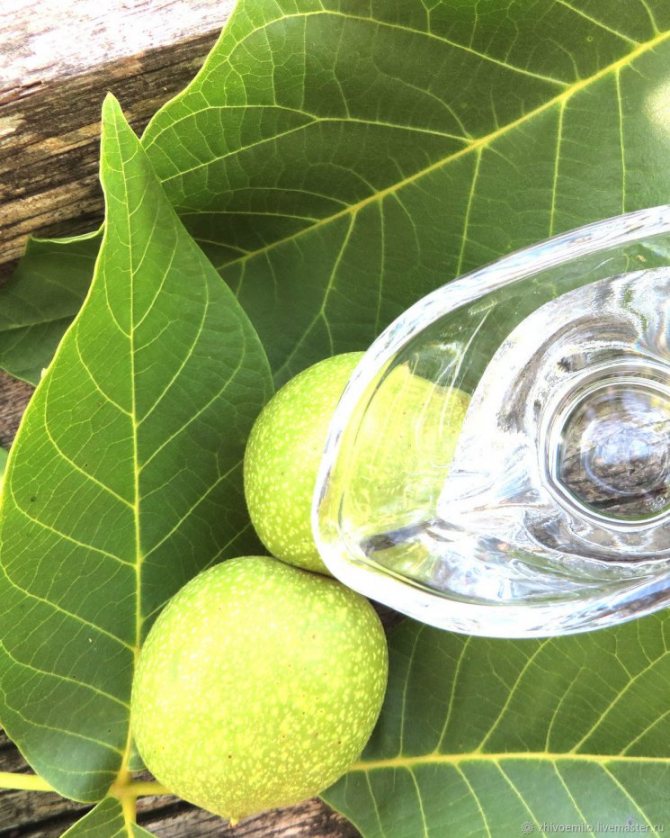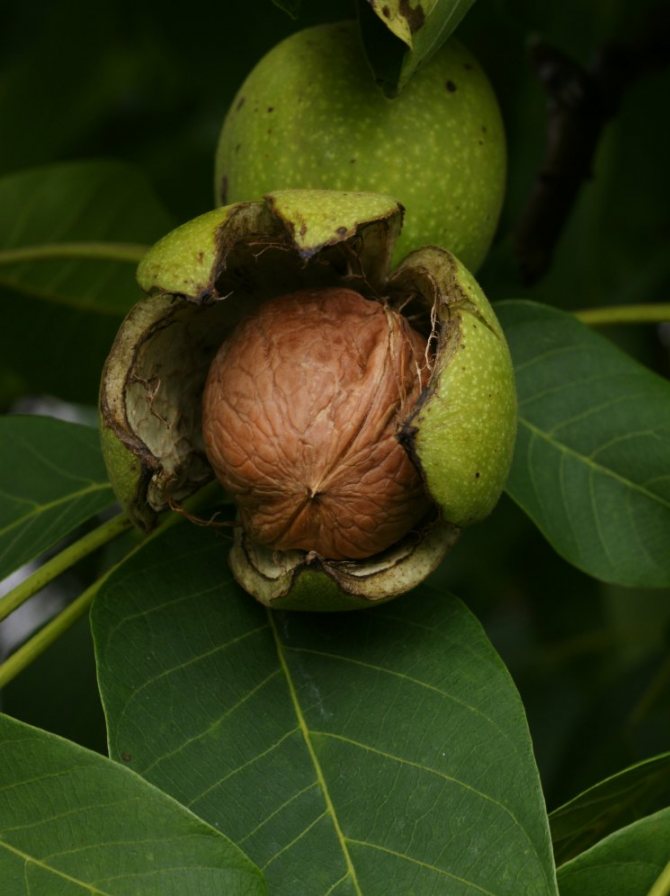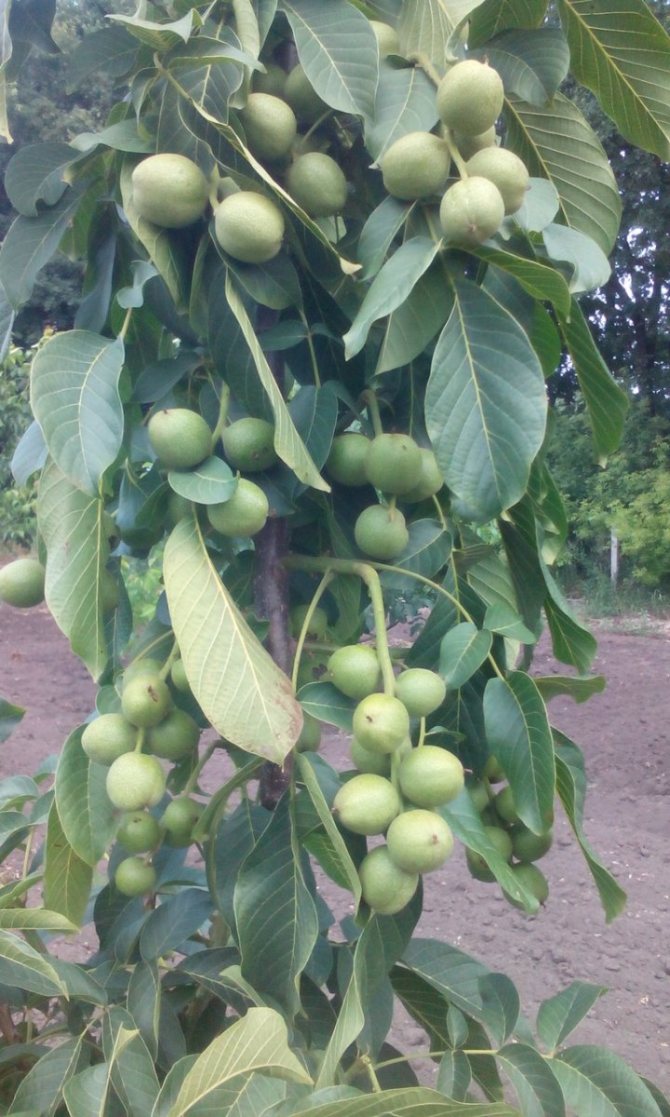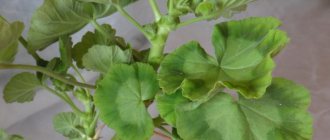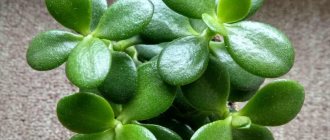Although it is widely believed that walnuts are only able to take root in the south, this is not true. Breeders have developed enough frost-resistant varieties. Their fruits are tasty, they have time to ripen. It is only important to study the information in detail in order to know how to properly plant a plant.
Gardeners' opinions on how to grow walnuts from walnuts at home on the site differ. Some recommend planting for the winter, others prefer to do it in the spring.
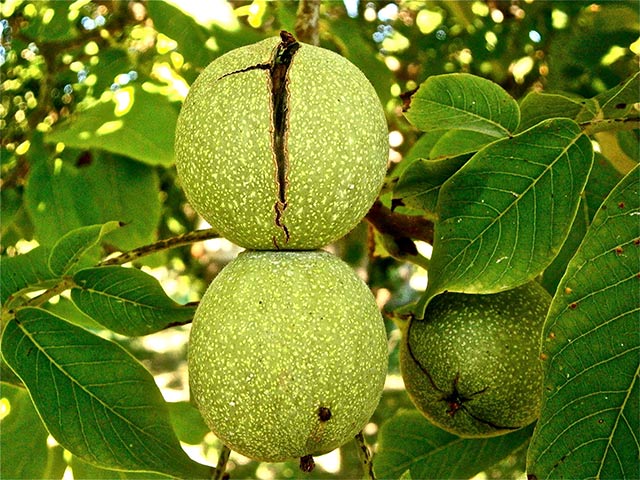
In practice, it has been proven that for regions where winters are short, it is preferable to plant in autumn. But if frosts last more than four months, the snow lies for a long time in spring - it is better to plant a plant from a stone in spring. Then the likelihood that they will disappear is lower.
Do I need to feed walnuts
It would seem, what kind of question? All plants need feeding! But in this particular case, one should not rush to answer, one must first understand the peculiarities of the culture.
Walnut is a tall, up to 25 m tree with a powerful root. It goes 4 meters deep and expands to the sides by 20 m. It turns out that the root system of a walnut covers a huge volume of soil. And if we take into account that this is an allelopathic culture, that is, it oppresses all the plants planted nearby, then it turns out that the land, mastered by the tree, is at its full disposal.
In Ukraine, where at least one walnut tree grows in every private yard, the culture in the garden is not fed. At all! Well, when planting, they bring in humus, they can water a young tree with nitrogen in the spring, and add phosphorus and potassium in the fall, mulch with rotted manure or compost. And often they do not do this either, the result, frankly, will differ little.
But as soon as the nut began to bear fruit, everyone stops paying attention to it. Only the fruits are collected in buckets every year in the fall and dry branches are cut (sometimes). True, industrial plantations still feed.
But in the Non-Black Earth Region, the walnut, not only does not grow well, it is fed, the crown is formed, but it still bears fruit irregularly. To make it clear why this is happening, it is better to disassemble everything in detail, point by point:
- On black soil, where the climate is warm, adult walnuts in private households are not fed. With such an area of food, and even on fertile soils, he himself will take everything he needs from the soil. Excess fertilization can only harm the tree. Nitrogen will cause a strong build-up of shoots that will not have time to ripen before winter, or will develop to the detriment of fruiting. An excess of other elements will not do anything good either. It is not for nothing that experienced gardeners argue that it is better to underfeed any plant than overfeed. Of course, we are talking about a healthy tree that really grows on fertile black soil, and not on construction waste.
- Industrial planting of walnuts, even on black soil, needs additional feeding. Trees grow there densely, and their food area is much smaller than in the private sector. If the plantation is not fertilized, walnuts begin to compete for nutrients, hibernate poorly and bear fruit worse.


- Why feed crops on poor soils is understandable.If there are few nutrients in the soil, then no matter how powerful the root system is, it cannot pull out from the ground what is not there.
- Even in temperate climates, walnuts grow poorly. Most varieties are not hardy enough already in the Tambov region. In the North-West, if the walnut can be grown, it will be small, constantly freezing, almost does not bear fruit. And in general it does not resemble that majestic tree, which culture the southerners know. So far, the creation of winter-hardy varieties of satisfactory quality has not been crowned with success, and hybrids with Manchurian walnut are unsuccessful. It is possible to grow a crop in cool climates, but it requires a lot of effort. The complex of care includes reinforced top dressing, especially autumn, to help the tree survive the winter.
And further. Most varieties of walnuts are biologically close to the species plant. And it grows in nature without any care, not to mention top dressing. It is not known what the varieties and hybrids of the new generation will be.
The best varieties
There are walnut varieties that are most loved by the inhabitants of Russia.
These include:
- "Aurora" - not afraid of frost, the variety is resistant to many diseases. Has a core mass of 12 g;
- "Ideal" - a frost-resistant, early-growing variety that can withstand temperatures as low as -35 ° C. Repeated flowering is possible with the appearance of a large number of nut ovaries;
- Astakhovsky - frost-resistant (tolerates a drop in temperature to -37 ° C), has good resistance to pest infestation. Included in the State Register of Russia in 2015. Suitable for growing in the Voronezh, Kursk regions, in the Central regions of the Russian Federation. Also planted in the Samara, Penza, Ulyanovsk and Orenburg regions. The kernel has a dessert taste rated by professionals at 5 points;
- "Memory of Minov" - a fast-growing variety with a powerful crown, has a large fruit (fruit weight 15–18 g) walnut of medium ripening. Withstands temperatures as low as -37 ° C;
- "Elegant" - medium early variety, drought-resistant. May not tolerate severe frosts. Bears fruit in 5 years.
- "Levina" - undersized, early-growing variety, characterized by increased frost resistance. When the temperature drops to -35 ° C, it may freeze slightly. Resistant to pests and diseases.


The Greeks called walnuts karion, which means "head". This is because the shell of a walnut resembles a human head, and a nut kernel looks like a brain.
Features of feeding walnuts
There are no global differences in feeding walnuts and other fruit crops. In the spring, they give mainly nitrogen fertilizers, in the fall, phosphorus-potassium fertilizers.
It is advisable to feed a walnut seedling in the first years of life on black soil, even if fertilizers were added to the planting pit during planting. In cool regions and on poor soils - a must.
The main time for fertilizing walnuts is autumn. They should not be poured onto the ground, but should be carefully embedded in the soil. The culture does not like to be disturbed by the roots, so the operation must be carried out carefully. It is better to immediately outline the groove surrounding the crown, into which fertilizers will be applied from year to year. We need to dwell on this in more detail.
Fruit trees are best fertilized in the groove that surrounds the tree. Top dressing is poured there, mixed with soil and watered. The indentation should be the same size as the crown of the tree.
Someone might argue that the walnut grows simply huge, and the groove will be a decent distance from the trunk and cover a large space. It can be argued that the culture reaches its maximum size only on black soil, and even in a warm climate. And there top dressing of the walnut is not carried out at all or is limited to mulching the trunk circle with humus every few years.
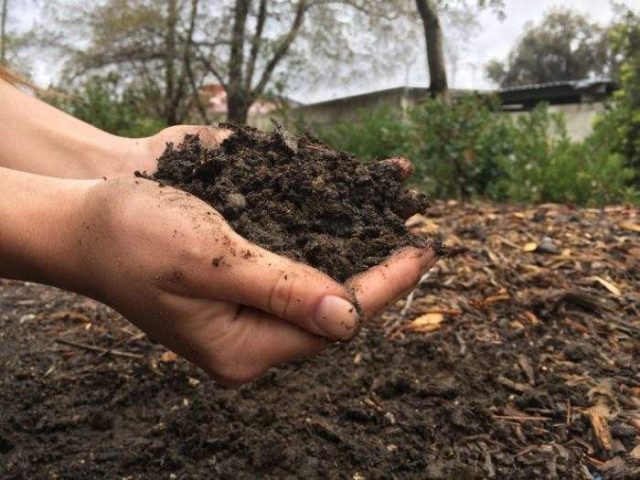

As you move to the North, the trees grow in height less and less until they become real dwarfs in the Leningrad region. It is in cool climates that walnut dressing should be given special importance.
Fields of application of fruits
Walnut kernels are not processed, but applied in their original form. The main field of application is the confectionery industry. The nut is added to cakes, pastries, halva and other desserts. Suitable for the production of oil used in the food industry. The cake is used by livestock.
The wood is polished and has a beautiful pattern. Wood is a valuable material used to make furniture and plywood sheets. The walnut shell is used in the production of black dye used in dyeing materials in the woolen industry in the production of fabrics.
How to feed a plant correctly
Summing up, you can give the following recommendations for feeding walnuts:
- On black soil, the culture after the start of fruiting does not need regular feeding. Once every 4 years, the trunk circle in the fall is mulched with humus at the rate of 3-4 kg per square meter of the projection of the crown onto the ground.
- Intensive feeding of walnuts growing on fertile black soil can harm the tree.
- Poor soils require two spring dressings. The first is done until the soil is completely thawed with nitrogen fertilizers, the second - after about 3 weeks with a full mineral complex.
- Fertilizers should be applied not over the entire area of the trunk circle, but into a groove previously dug, the diameter of which coincides with the size of the crown, mixed with the soil and watered abundantly.
- There is no need to feed walnuts without special need in the summer.
- Carried out at the end of summer, and in the south - at the beginning of autumn, fertilizers are classified as autumn. They are made exclusively with phosphorus and potassium (no nitrogen).
- In cool regions and on poor soils, late autumn mulching of the trunk circle with humus can be carried out annually.
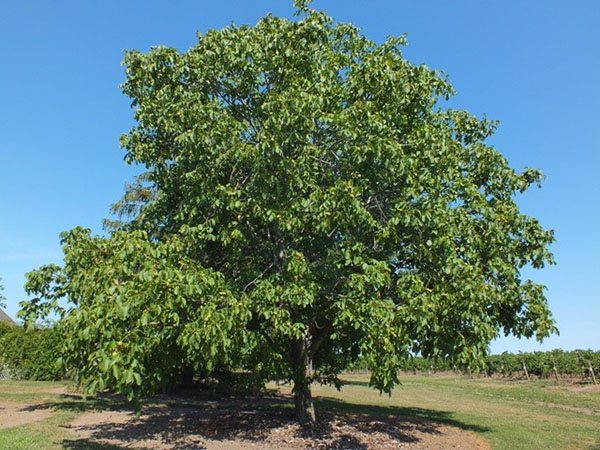

The appearance of flowers
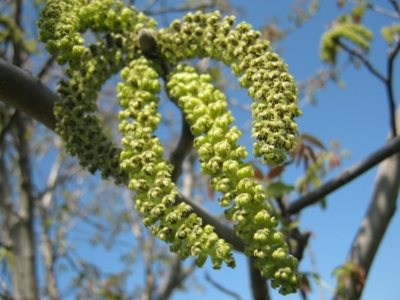

There are two radically different flowering forms. The reason is the difference in varieties. Flowering is subdivided into protandric and protaginous forms. The walnut is a monoecious plant that has dioecious flowers. They are all green.
Stamens are collected in straight earrings about 10 cm long, 1-3 pieces each, which are located on the growths of the last year. The pistillate flower has a different shape. It looks more like an open bud, on top of which two small leaves (stigmas) have formed. Elongated pistillate flowers, and in the upper part they pass into a column with two stigmas.
Below is a video about the flowering of a walnut:
Protagonist form
The difference between the forms lies in the flowering order of the male and female flowers. In the protaginous, men are the first to bloom. There is a chance that the female inflorescences will not open.... In this case, the tree will not bear fruit.
Protandric form
In the case of the protandric form, the female inflorescences are the first to bloom. In this case, there is also a possibility that the nut will have problems with fruiting.
Attention!
If the female inflorescences fall off before the male blossoms, there will be no ovaries. Because of this feature, the tree needs a partner with a different flowering shape.
Experienced gardening tips
The expression “it is better to underfeed than to overfeed” refers to the walnut more than to other fruit trees. What do experienced gardeners advise beginners when it comes to this culture?
- Do not expect high or annual yields from walnuts planted even in temperate climates.
- On lean soils, carefully adhere to the feeding schedule. Failure to observe them will lead to a lack of harvest and freezing of the tree, an excess - to shedding of nuts and, again, to damage by low temperatures.
- A walnut growing on black soil should just be left alone. He will give a good harvest anyway. A tree surrounded by excessive care can die.
Varieties
There are several types of walnuts, they differ in terms of ripening, weight and number of fruits, resistance to diseases and pest infestation.
The most famous varieties:
- "Skinossky": it reaches 12 meters in height, the crown is voluminous and dense, frost-resistant tree. The mass of ripe nuts is 15 grams, with large kernels. You can eat it in the second half of the first autumn month;
- "Codrene": grows in Moldova. Fruits are round in shape, their weight is more than 10 grams, with a thin skin;
- "Santa Rosa Soft Shell": his homeland - California. Differs in light shell and white kernels;
- "Dessert": a domestic variety. Nuts ripen early, the culture is drought tolerant and loves warmth. The peel is of medium thickness, the fruits are large, spherical;
- "Giant": grows in temperate climates. The fruits are not too large, their weight is about 8 grams, but they are rich in yield.
Why do you need to feed walnuts in the spring?
Plants are living things. They need energy to develop; they get food from the soil. Gradually, the land is depleted, so gardeners and gardeners must replenish the reserves of the necessary substances.
Top dressing has several goals:
- acceleration of development;
- increased productivity;
- the formation of immunity to disease.
Nutritional deficiencies are indicated by yellow leaves, stunted growth, and death of flowers and ovaries.
The walnut grows fast enough. It is advisable to feed it for these purposes only on poor soils - gray soils and others. Excessive stimulation on fertile soil leads to negative consequences - the wood does not have time to ripen by winter - the culture will die in frost.
In the spring, the plant requires nutrients to build up green mass. The root system is most active at this time. She quickly assimilates useful elements. The future harvest directly depends on how competently the culture is fed during this period.


Botanical description of the process
During flowering, the tree has an attractive and unusual appearance. Because of this, walnuts are planted even in parks and along roads in order to green the city. Female inflorescences develop at the ends of annual shoots. They capture pollen with wide moist “lobes” of the stigma.


In some cases, the walnut can be pollinated with its own pollen. This phenomenon is caused by a failure of dichogamy - the flowering of male and female inflorescences at different times. Dichogamy prevents the tree from self-pollinating. Differences can be up to 14 days. The stigma of a female flower is capable of receiving pollen for up to 6 days. The ear ring can only be pollinated for one day.
In nature, the population of protandian and protagonistic nuts is approximately the same. Some species are not dichogamy, that is, they have female and male inflorescences blooming at the same time.
Advice
After the end of flowering, a period of active development of fruits and annual shoots begins. During this time, the plant needs nutrients.
What fertilizers are used as top dressing?
By origin, fertilizers are divided into 2 groups:
- organic - plant and animal residues;
- mineral - chemical elements of inorganic nature. They consist of salts, oxides, acids and other compounds.
Each of them has additional subgroups.
Organic
Walnut responds well to:
- manure is the most common and affordable option;
- compost - decomposed leaves, tops, organic household waste;
- humus - rotted manure;
- wood ash - the remainder of burnt wood and plant residues: firewood, straw, tops, pine needles, coal.
Organic matter is applied every 2-3 years at the rate of 3-4 kg per 1 m². It improves the structure of the soil and the assimilation of other substances, activates the activity of beneficial bacteria.
It is forbidden to simultaneously use organic and mineral compounds. The best way is to alternate.
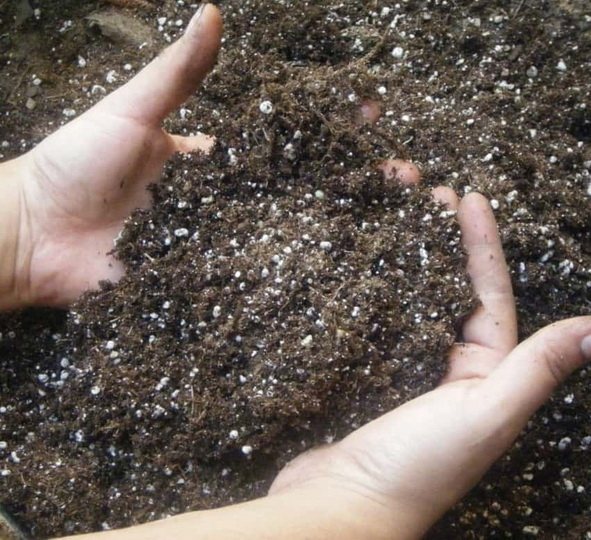

A positive result is observed when using green manure plants:
- spring oats and barley;
- winter wheat and rye;
- alfalfa;
- clover;
- ryegrass;
- fescue;
- lupine;
- peas;
- rape;
- rape.
They are specially grown for subsequent embedding in the ground. They are rich:
In spring, plants are planted between rows, and in autumn they are plowed into the ground.
The trunk circle is mulched with manure, sawdust, and mown grass. The coating prevents drying out and cracking of the soil, restores fertility.
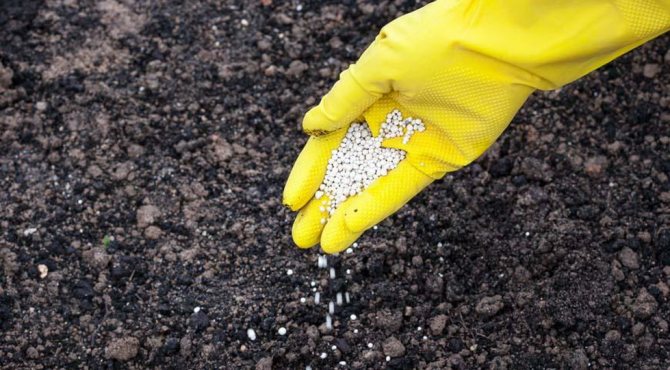

Mineral remedies
Walnut - crops with specific nutritional requirements. They more than others need:
These elements should be contained in fertilizers for different types of nuts:
In a year, the culture requires:
- 6 kg of ammonium nitrate;
- 10 kg of superphosphate;
- 3 kg of potassium salt;
- 10 kg of ammonium sulfate.
Zinc and manganese sulfate is added at the rate of 2.5 g per 1 m².
It is forbidden to use nitrogenous substances during the fruiting period.
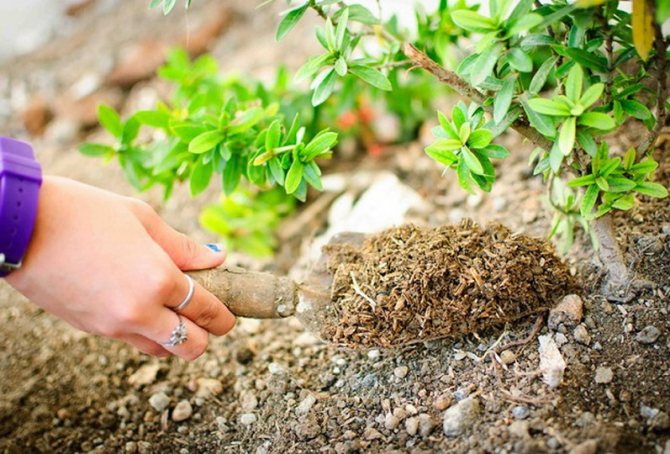

Complex fertilizers
Complex formulations contain 2 or more elements.
- nitroammofoska - nitrogen, phosphorus and potassium in various ratios depending on the type of fertilizer;
- nitrophoska - nitrogen, phosphorus, potassium;
- ammophos and diammophos - nitrogen, phosphorus.
general information
More than a thousand years ago, this tree arrived in Europe from Central Asia. It was brought to Russia by Greek merchants, which was the reason why the plant received such a name. Now they are engaged in breeding not only in hot countries of the world, but also in Russia, Moldova, Belarus, as well as in Ukraine and the Caucasus.
In ancient times, the walnut had several more names.: "Food of heroes" "acorn of the gods", "tree of life". People from time immemorial respected and loved this powerful plant, because it gave them delicious and very useful fruits. Other parts of the tree were also actively used, for example, foliage was used for medicinal purposes.
Walnut is not only one of the largest, but also one of the longest-lived species among all trees in the Middle Lane. Based on the statistical data, it is safe to say that some specimens lived up to 400-600 years. However, today the probability of meeting such a long-liver is extremely small, because walnut wood is highly valued and is actively used for the production of expensive luxury furniture and decorative elements.
According to experienced gardeners, the amount of fruit that can be obtained from one tree primarily depends on the age of the plant. So, the yield of a young (up to 50 years old) walnut does not go in comparison with the fact that it managed to step over the 100-year mark.
Description and characteristics
This walnut tree is considered to be tall. If the plant likes the place that was assigned to it on the site, and the gardener follows all the prescribed rules for caring for it, then the walnut can stretch up to 18-23 meters in height.
The spreading crown of the tree can reach 15 meters in diameter, and the branches diverge at right angles. It should be concluded: before planting such a plant in your garden, you should take a responsible approach to choosing a place so that the grown tree does not spoil the appearance of the site, does not touch the buildings with branches and does not block the sunlight to other plantings.
The walnut tree has a very powerful and branched root system.... During the first three years, the main taproot develops; as it grows, it seeks to penetrate into the very depths of the soil and gain a foothold in it. At 4-6 years of life of the tree, lateral roots are formed, they diverge by 5-6 meters in different directions from the main one.
Such roots are located close to the soil surface, but only 30-50 centimeters deep. This perfect root system helps the adult plant not to suffer from low rainfall and insufficient watering, since the large capture area allows it to find water on its own.
If you cut down an adult walnut tree, but do not touch the stump remaining from it, then after a while young shoots will begin to grow from the stump, from which it will be possible to harvest the first crop after 1-2 years. Consider this feature if you want to get rid of the tree forever, because in this case it is not enough just to cut it down, you will have to uproot the stump. There is no need to worry about the roots left in the ground - they are not able to give new growth.
The flowering of this nut occurs in spring (April-May) and lasts about 2-3 weeks. Flowers bloom at the very beginning of the growing season, without waiting for all the leaves to form. At the tips of annual shoots, female flowers are formed, on the other branches - male flowers, which gather together in 5-10 pieces and form earrings.
In the climatic conditions of the middle and southern zone, re-flowering can be seen, usually in mid-June. The walnut tree is a self-pollinated plant, the fruits ripen by mid-autumn (September-October). It is worth noting that nuts from different trees often differ in size and taste.
Varieties for the middle lane
Today, Russian gardeners for growing walnuts in the climatic conditions of the middle lane choose one of 20-25 hybrid varieties. These varieties were bred specifically for our regions, they are distinguished by high yields and resistance to low temperatures.
For Russian household plots, the following varietal species are most suitable:
- "Yielding" - has a high oval crown and spreading branches. It is very hardy, therefore it has been successfully grown in the middle lane for a long time. Another positive quality of the variety is an early harvest - it can be harvested in early autumn, before the cold snap and the beginning of the rains. Resistant to most insect pests and diseases afflicted by walnut bushes and trees.
- "Dessert". The variety is suitable for growing in hot regions, as it is resistant to droughts, but does not tolerate cold snaps well (kidneys and bark crack due to low temperatures). Quite miniature (up to 3 meters in height), but has a dense crown, suitable for small summer cottages. A good harvest can be obtained from a tree of this type - 20-27 kilograms of nuts per season.
- "Abundant". It grows up to 5 meters, the first harvest gives 4-5 years after planting. From one tree, you can get up to 30 kilograms of nuts per year. They grow in clusters of 8-10 fruits. It is recommended to abandon this variety if you live in the northern regions, as "Izobilny" is unstable to frost and cold winters. Possesses high immunity to diseases such as fusarium, brown spot. Gardeners note the excellent taste of the fruits of this variety.
- "In memory of Minov" is the most popular variety in our country. He gained recognition among gardeners due to the early ripening of fruits. The tree gives its first harvest 5-6 years after planting. Nuts are flattened, large, thin shell, has a silvery tint.
- "Graceful" is a massive plant up to 5 meters high. Possesses a dense crown, resistance to diseases, frost, insect pests. Fruiting in mid-autumn, the first harvest can be expected in the fifth year after planting. The average yield is 20 kilograms of nuts per season.
- "Black Walnut". It got its name from the large fruits in a hard and thick black peel. The tree grows very tall, the first harvest gives only 10 years of life. Loves sunlight and moist soils.In winter, young plants need additional shelter, mature specimens tolerate low temperatures well.
- "Ideal" is a fast-growing variety that gives the first harvest 3-4 years after planting. When a tree reaches 12 years of age, its productivity rises to 120 kilograms of nuts per season. It is recommended to plant away from buildings, as it has a highly branched root system, which develops a large area of land around it. Such a plant requires good lighting, it prefers loamy soils of medium moisture.
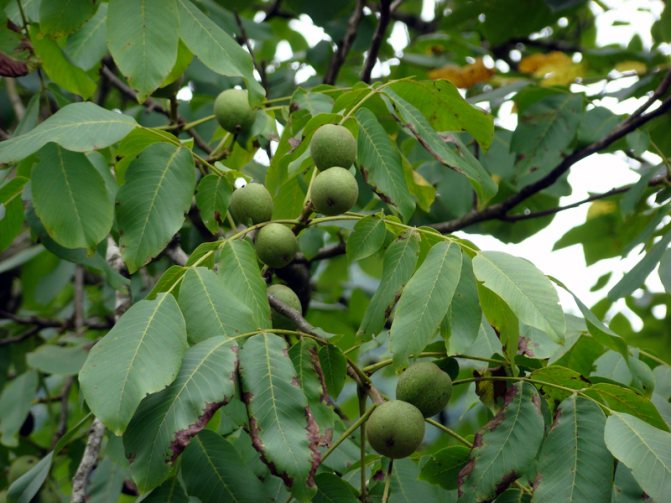

Fertilizing walnuts depending on the type of soil
To obtain a positive result, the composition of nutrients is adjusted on different types of soil:
- Nitrate - have an alkaline reaction. They should be applied on acidic soils. Normalizes the pH level, bringing it closer to neutral level.
- For slightly acidic soil, ammonium-nitrate compositions are preferable.
- With an alkaline or neutral reaction - ammonium and amide forms.
Clay and sandy soils are cultivated by introducing organic matter. Podzolic soil is necessarily lime, peaty-boggy - enriched with potassium and phosphorus.


Walnut care
To grow a healthy and strong walnut tree on your site, you do not need to spend a lot of time and effort on caring for it. However, some of the intricacies of this process are worth familiarizing yourself with:
- Young trees should be watered twice a month in spring and summer. One plant will have to spend about 30 liters of water per watering. Adult trees need water only during prolonged drought.
- Every autumn, potash and phosphorus fertilizers should be added to the soil under the tree. In the spring - nitrogen fertilizers.
- This plant does not require pruning. But if it becomes necessary to remove dry or frozen branches, do it in early June. After the procedure, treat each cut with natural linseed oil or garden varnish.
All this is within the power of most gardeners!
General rules and timing of fertilization
When growing walnuts on an industrial scale, feeding is carried out throughout the growing season. On chernozems, it is permissible to do this twice - in spring and autumn.
The composition is selected in accordance with the stage of growth. The introduction of unsuitable components or a complete disregard of fertilizing, at best, leads to a decrease in yield, at worst - to the death of the plant.
Walnut seedlings are placed in pre-prepared - about 2 months in advance - planting pits. They lay in them:
- 1 bucket of humus;
- 1 tbsp. wood ash;
- 1 tbsp. superphosphate.
A small layer of earth is poured on top to avoid scalding the roots. If you follow these recommendations, the tree will be provided with food for 3-4 years in advance. After planting, it is advisable to mulch the soil with straw manure.
How to fertilize a nut depends on the phase of its growing season. At the beginning of the season, he needs more nitrogen. This element takes part in the processes of growth and development, it is necessary for the synthesis of proteins, chlorophyll and a number of other important components. During the formation of flowers and fruits, the consumption of phosphorus and potassium increases.
With an unbalanced diet, nitrogen accumulates in the leaves and fruits in the form of nitrates and nitrites, which are harmful to health, therefore it is necessary to balance it with other substances.
The optimal period for spring feeding is mid-April or early May. The exact time depends on the weather conditions. The formulations can be used dry or liquid. The second form is more productive, because some elements are inactive in the soil.


In summer, feeding is used with caution, since the root system of the plant is in a dormant phase.
After harvesting, make (kg per 1 m²):
- organics - 3-6;
- potash fertilizers - 3-8;
- phosphorus dressings - 5-10.
Nitrogen-containing preparations are embedded to a depth of 5 cm, phosphorus and potash preparations - up to 15 cm.
Description and characteristics
The walnut tree has a wide spreading crown, its height reaches 30 m. The length of the main root of the tree, which has reached 80 years, is about 5-7 m, and the lateral roots are 12 m. Branching is due to a developed root system, the radius of which is about 20 m. If the aboveground part of the nut dies, then the root collar begins to release offspring. The trunk diameter is about 2 m. The color of the bark is light gray.
The shape of the leaves is complex, since they are whole-edged, pinnate, and serrated. The structure of the leaf includes 5-9 individual, elongated leaves. The leaf plate has a strong odor. Their total length is about 4-7 cm.
Errors
Typical mistakes gardeners make when feeding nuts are as follows:


- Nitrogen overdose. As a result, the plant begins to "fatten": a lot of extra shoots starts to grow. An overdose is especially dangerous in the summer during the ripening of the ovary - it can lead to the fact that all the fruits crumble unripe.To avoid this, saltpeter and concentrated organic matter (such as chicken droppings) should never be applied in the summer, and the timing of spring feeding can be shifted early: it is permissible even to scatter saltpeter in the snow.
- Insufficient top dressing on poor soil. In this case, the trees develop poorly, chlorosis appears on the leaves (pale spots due to a lack of chlorophyll). To avoid this, you need to use fertilizers containing magnesium and calcium, as well as increase the dose of nitrogen.
- Insufficient watering. Any fertilizers must be dissolved - only then the plant will assimilate them. Watering should follow each top dressing.
Diseases and parasites
Gray, brown, black spots on the foliage, fruits and shoots of the walnut are signs of bacteriosis or marsoniosis. Prolonged dampness, improper watering, excess nitrogen fertilizers can lead to them. For the prevention of diseases, it is necessary to monitor agricultural technology. In the spring, you need to free the trunks from dead bark, freezing branches, treat trees with a 1% solution of vitriol or Bordeaux liquid. Affected plant parts - cut and burn. To prevent the development of mycoses and scare off pests, regular treatment of trees with a 7% aqueous solution of urea helps.
Growths on the trunks - symptoms of root cancer... Such neoplasms need to be opened, cleaned with caustic soda and rinsed with plenty of water.
The annual whitewashing of the trunks with lime to a height of 1–1.5 m from the ground helps to protect the bark from parasites. To get rid of aphids from trees, you need to spray the crowns with Actellik or Antitlin preparations.
Caterpillars-moth and their nests must be collected by hand, hang special traps on the branches... Whitelet butterfly larvae are destroyed with a 30% solution of Dendrobacillin, spraying the crowns outside the flowering period. When plants are damaged by a nut mite, acaricides are used - Aktar or Kleschevit.
In a temperate climate, the fruiting age of a walnut occurs 2-3 years later than in the south, and the yield is an order of magnitude lower. However, with proper care, spherical carved tree crowns will become the main decoration of the garden.
Spread
The homeland of the walnut is the regions of Minor, Central, Southeast Asia. Wild species are common in the nature of the Transcaucasus, northern India, and China. Natural habitats include floodplains, gentle slopes and mountain gorges.
Cultivated in the south of Europe: in the Balkans, Greece, Spain, Italy, Ukraine, Moldova... Introduced in Western Europe in Germany, Norway. In North America, it is grown in well-watered areas up to 56 ° north latitude. In Russia, it is cultivated in the Crimea, Krasnodar Territory, Stavropol Territory, Rostov Region, Kabardino-Balkaria. It is developing with varying success in the south of the Volga region.
Not "Ideal" alone
Despite the fact that "Ideal" is so good, growing it, for example, in Siberia, is nevertheless fraught with a number of difficulties - the plant will require shelter, attention, dressing, and shaping. Perhaps, citizens who are keen on walnut farming will like other species of the Walnut genus - they are more stable in nature, and, although they will also require efforts to grow, they may be easier to breed in Siberia or the Urals. These are nuts:
- The black.
- Rocky.
- Siebold (ailantholus).
- Grey.
- Manchurian.
- Cordate.
How to read a tree if it needs nutrients?
Overabundance
Attention!
A characteristic sign of excess nitrogen in the soil is the so-called "fattening", an excessive growth of green mass.
Walnut begins to sprout en masse (mainly vertical), increases the number of small branches many times, expands to the sides. This is dangerous for two reasons:
- Unripe wood becomes brittle. The crown can simply break under its own weight, so excessive growth must be stopped.
- The tree grows, but does not form an ovary and either does not bear fruit at all, or too few nuts appear on it.
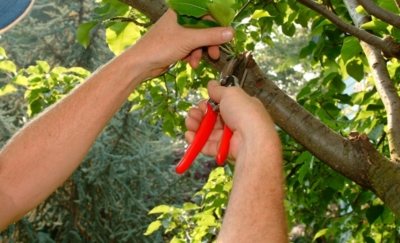

Since the soil cannot be depleted on purpose, the measures to combat this phenomenon are only timely pruning, "notching" (cutting the bark with covering over the damage with pitch to interrupt the access of nutrients to individual parts of the plant) and other methods of crown formation. In addition, “fattening” trees can be fed only with phosphates and potassium fertilizers, avoiding the introduction of nitrate and other nitrogen compounds.
Walnut does not tolerate damage very well, therefore, when pruning, you must definitely use a pitch. In extreme cases - oil paint. Without this, the saw cut can become a gateway for infection, which will lead, at best, to the death of an entire branch.
Disadvantage
The characteristic signs of nutrient deficiency in the soil for walnuts are:
- leaves turned yellow ahead of time;
- wilting of the ovary;
- growth arrest, dying off of young shoots.
Advice
First of all, such phenomena are observed on gray soil and sand soil. Here feeding is a must. On chernozem soils, you need to look at the development of the tree.
Why is it so important to fertilize the plant?
Unlike garden or field crops, few people are engaged in tree feeding.
Important!
Many sincerely believe that fruit trees, including nuts, will themselves take everything they need from the soil.
This opinion is deeply wrong:


- The walnut has a very powerful root system, spreading in breadth and in depth - but it can only take from the soil what is already contained in it. If the soil is too poor in nutrients, the nut will grow slowly and will not bear fruit.
- Proper feeding helps to balance the development of the tree. Sometimes it happens, for example, that the seedlings planted in nitrogen-rich soil (for example, where there was a compost heap a couple of years ago), the seedlings swing up sharply - and can break from the wind. In this case, they need to be strengthened with supports - and the dose of potassium and phosphorus in the soil must be increased many times.
- Top dressing can increase the plant's resistance to harmful factors. For example, ammonium sulfate makes the nut less prone to damage from the moth. Correctly applied fertilizers in the first year will strengthen the wood and allow it to ripen better for winter - and this will allow the nut not to freeze in frost.
- Trees used for commercial cultivation of nuts waste nutrients on fruit formation - and they need to compensate for this deficiency. Without this, good harvests will not last long - which is a shame: normally a healthy tree bears fruit for at least 70-80 years.
Interesting Facts
Walnuts were first named in Kievan Rus, where they got among other goods brought by Athenian merchants. In biblical Babylon, these trees grew in hanging gardens.
For many peoples of the Caucasus, the walnut is considered sacred, and in Moldova there is a custom to plant this plant in the courtyard of a house when a child is born in the family.
The largest is the walnut tree, which existed on the territory of modern South Ossetia until the end of the 19th century. The circumference of its trunk exceeded 8 m, and several dozen horse riders could take refuge in the shade of the crown. The average yield from the giant was about 1.5 tons of fruits per season.
What kind of care does a tree need
In spring, an adult walnut tree needs to be cleaned of "dead" bark, it is recommended to rinse the trunk with 3% copper sulfate, and also refresh it with lime whitewash. Whitewashing the walnut is necessary to protect against potential garden pests.
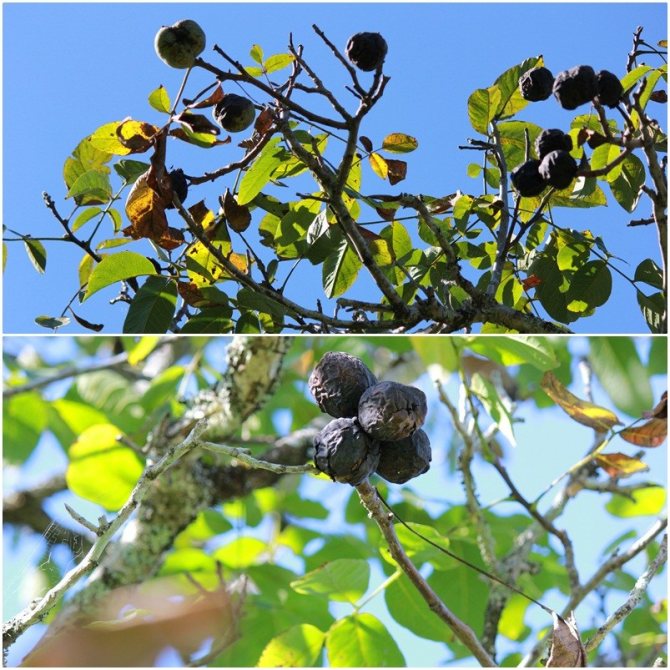

All walnuts need sanitary pruning, formative pruning is not required for the walnut tree - the walnut copes with this task on its own. Sanitary pruning is best done in summer.
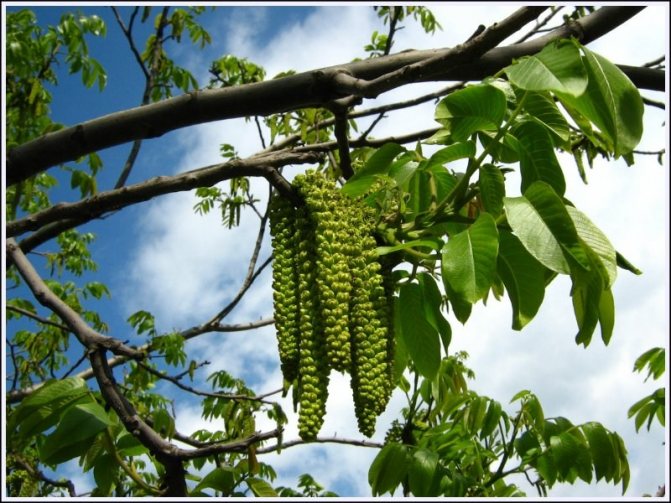

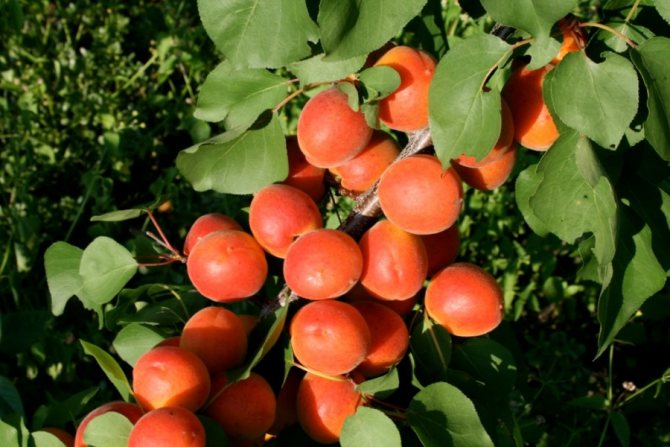

It should be remembered that this culture has a good ability to recover, so you should not be afraid that the tree will hurt after pruning. It is recommended to cover all sections with garden pitch.
Regular watering is required only for young walnut trees during the heat in summer. Each young nut will require at least 3 buckets of water. If the plant has already reached 4 m in height and from time to time the earth is moistened naturally - with the help of rains - the plant does not need to be watered on purpose.


Photo gallery
How and when the nut fruit is formed
Step-by-step description of the formation of a nut fruit:
- The seeds are covered with a green shell. It is formed from bracts and leaf petioles for primordium.
- The surface gradually becomes dense.
- Internal cotyledons develop.
- After ripening, the shell cracks.
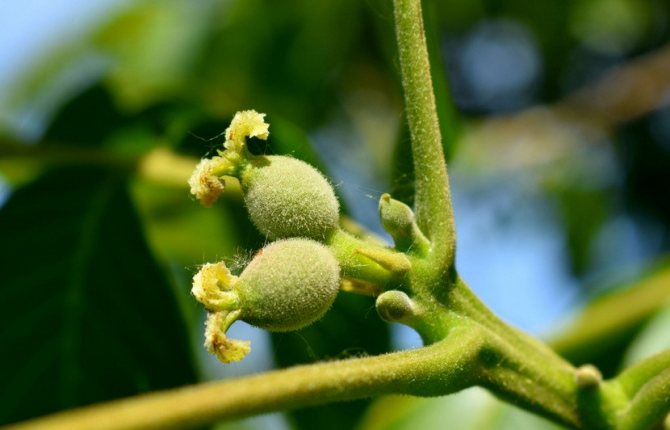

Fruits begin to set after flowering, that is, their formation and development occurs in the summer.
Harvesting
The harvest time of a tree is determined by its variety and the weather conditions of the growing area. A nut is considered ripe when the green pericarp of the nut begins to crack and the brown, hard-skinned fruit falls freely to the ground.
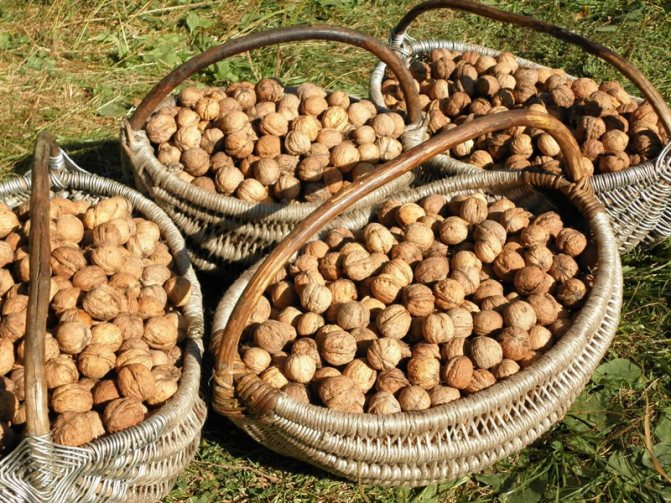

After harvesting, it is recommended to dry the nuts in a warm place. To dry them, spread them in a thin layer and stir periodically. After 1-2 weeks of drying, it is advisable to put all the fruits in linen bags for wintering.


Beneficial features
Walnuts are useful as a natural source of vitamins, organic acids, animal fats, amino acids, macro and microelements. In terms of nutrient content, they are comparable to meat and dairy products, and in terms of energy value they surpass them by 1.5–2 times.
It is recommended to eat walnuts:
- children;
- physically weak and emaciated people;
- suffering from nervous disorders;
- with insufficient immune protection;
- pregnant women;
- with violations of the functions of the endocrine glands;
- with hypovitaminosis;
- with atherosclerosis;
- with heart disease;
- with helminthiasis.
Means based on nuts with honey and other additives are recommended in the treatment of hypogonadism, a decrease in potency in men.
Fatty oil, extracts of leaves and green walnut shells have bactericidal, regenerating, strengthening, choleretic, hemostatic, anticancer effects. Preparations based on them are effective for:
- liver diseases;
- bacterial and viral infections;
- intestinal disorders;
- varicose veins;
- tuberculosis;
- furunculosis;
- autoimmune pathologies.
Economic value and application
Walnut culture began in ancient times, and it gave many varieties; variety is noted in the number of plumose leaflets, which are sometimes even whole, in the direction of the branches, in the degree of fragility of the woody part of the fruit, etc.
Seeds (kernels, "nuts"), which have a wonderful taste and high nutritional value and are everywhere in abundance eaten in their natural form, are used to prepare various dishes, halva, sweets, cakes, pastries and other sweets. The walnut is especially popular in the Caucasus, where it has long been considered a sacred tree. In the Caucasus, there are many recipes for the use of walnut fruits [3].
An old press for extracting nut butter. France
Walnut oil, which belongs to the drying group, is eaten, used in the manufacture of varnishes for painting, special ink, soap, etc. [3].
After squeezing out the oil, the cake remains, which contains more than 40% protein substances and about 10% fat; it is a valuable food product and excellent food for domestic animals, especially birds [3].
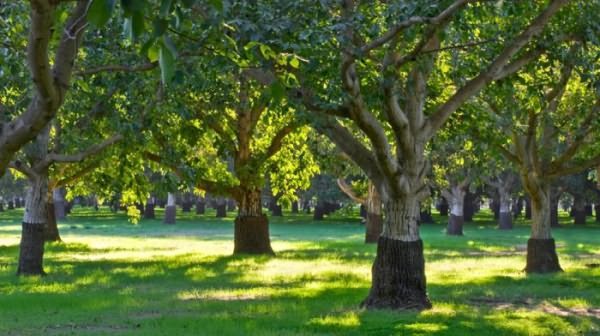

The kernel of a walnut contains (in%): fats 45-77, proteins 8-21; vitamin B1, provitamin A [6].
Walnut is an effective remedy for restoring male potency. There are many recipes associated with walnuts. One of the most beneficial recipes for men is walnuts with honey [7] [unauthorized source?].
The shelf life of nuts is no more than a year [8], peeled nuts is no more than six months [9] provided that the storage conditions are observed.
Leaves have long been used as a wound healing and vitamin remedy [4]. Decoctions and infusions of leaves and pericarp in folk medicine are used for gastric and gynecological diseases, kidney and bladder diseases, stomatitis and tonsillitis, and they are also drunk as an improving metabolism and general tonic for vitamin deficiencies, exhaustion, atherosclerosis [3].
In the southern regions, the walnut is widely cultivated as an ornamental plant.
Unripe fruits are used to make vitamin concentrates and fortified products (jam). Unripe fruits are highly nutritious, have a pleasant taste and are used for dietary nutrition and confectionery [4]. However, for the production of vitamin preparations, it is more expedient to use not the fruits themselves, which have enormous nutritional value, but the pericarp (after extracting the nuts), as well as the leaves, in which the content of vitamin C reaches 4500 mg per 100 g [3].
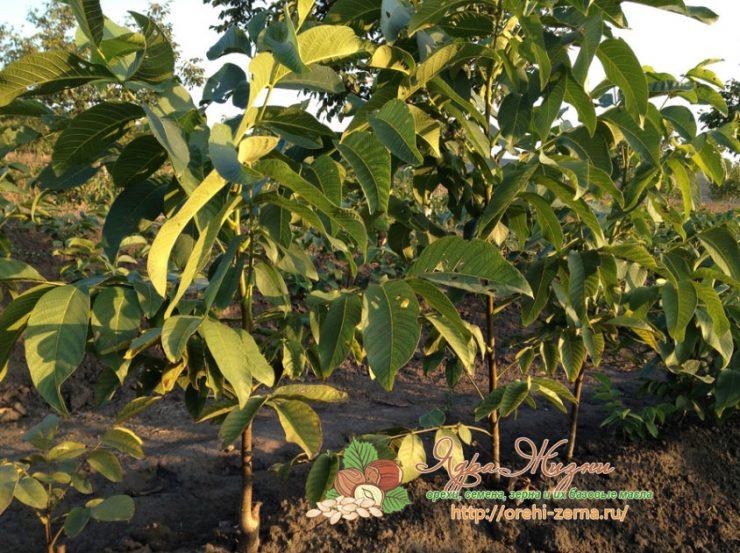

Pericarp powder was considered a hemostatic agent, it was sprinkled with ulcers and wounds. The drug "Yuglon" was made from the pericarp for the treatment of skin tuberculosis. Kernels are recommended for restorative nutrition after illness and to improve digestion. Fresh oil from them helps to heal ulcers and skin lesions. It is used to treat conjunctivitis and otitis media, and was previously prescribed as a laxative and antihelminthic agent [3].
The peel of the nuts contains a lot of tannins. Pericarps can be used to tan leather. Leaves, bark and pericarp were used to dye fabrics, wool, carpets, and hair [3].
There are successful experiences in the utilization of shells in the production of linoleum, roofing felts, grinding stones. The experience of using crushed walnut shells as an integral part of brake materials resistant to abrasion at high temperatures is known [3].
The main walnut producers are China, the USA and Turkey. From the republics of the former Soviet Union, a significant amount of walnut is grown in Ukraine and Moldova. At the same time, in the structure of Moldova's exports, walnut takes the 4th place - after wine, textiles and wheat. Back in the 18th century, Dmitry Kantemir mentioned the nut as one of the country's main treasures. The custom of planting a nut, when a child is born in the family, has survived to this day in Moldovan villages.
| World production walnuts by years (thousand tons) | |
| 1965 | 533 |
| 1970 | 654 |
| 1975 | 733 |
| 1980 | 795 |
| 1985 | 836 |
| 1990 | 890 |
| 1995 | 1068 |
| 2000 | 1292 |
| 2005 | 1747 |
| 2006 | 1691 |
| 2007 | 1929 |
| 2008 | 2125 |
| 2009 | 2282 |
Reproduction
The most productive way of seed propagation of a tree. The seedlings obtained in this way adapt more easily to the local climate and soil.
Ripe nuts are stratified before germination... If the shell is thick, store at 0–5 ° C for three months. Thin-shelled - at + 10–12 ° C for about 1.5 months. Then the material is placed in wet sand for 1–2 weeks. When the flaps open and the rudiments of sprouts appear, the nuts are planted in the ground to a depth of 10–12 cm. This is done when the soil warms up to 10 ° C. When sowing a large number, linear trenches are dug, placing the seeds 15 cm apart. To prevent young growth from dying from the cold, in the fall it is transferred to greenhouses. After 2-3 years, the seedlings become suitable for open ground.
In warm regions, walnuts are propagated by grafting, placing a cut shield of the desired variety under the bark of the rootstock.
Pruning
Sprawling "hat" with age will interfere with fruiting, so they begin to cut one and a half meter trees.
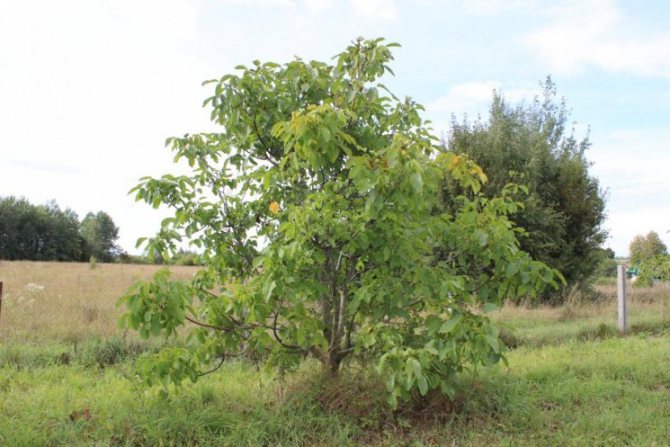

The crown is optionally given a tiered, cupped, spherical shape. First of all, dry, overly long branches that rub against each other are cut off.
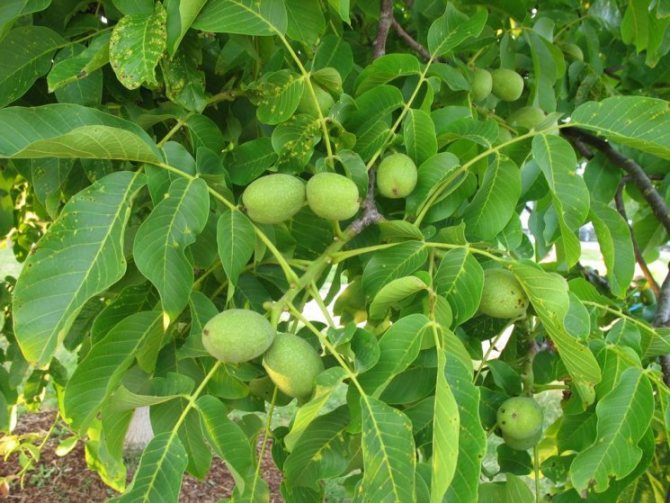

If the tree is damaged by frost, the blind spot is cut without affecting the living area. In the spring, such actions are not desirable, leading to a loss of juice. Sections are covered with a garden varnish.


Grafting method
To preserve the positive maternal qualities of nuts, grafting is carried out. They take seedlings of two years, planted in pots. For the winter, they are brought into the heat, so that before the procedure they acquire good shoots.
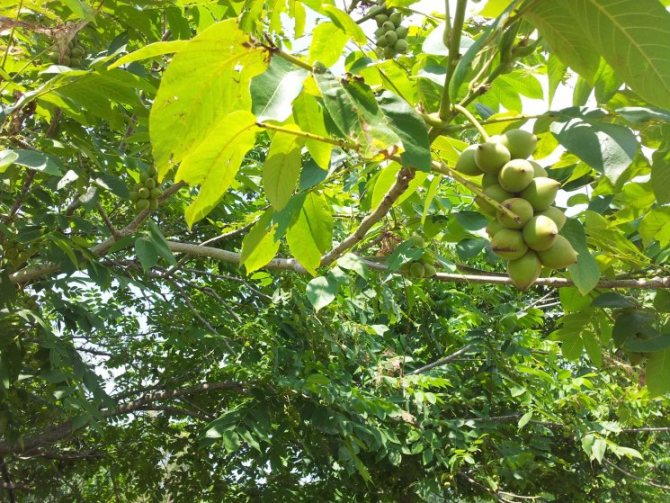

They are grafted in February by transplanting a piece of wood from the desired sample, pressing and bandaging it tightly. After that, they are kept in the house until the May disembarkation.
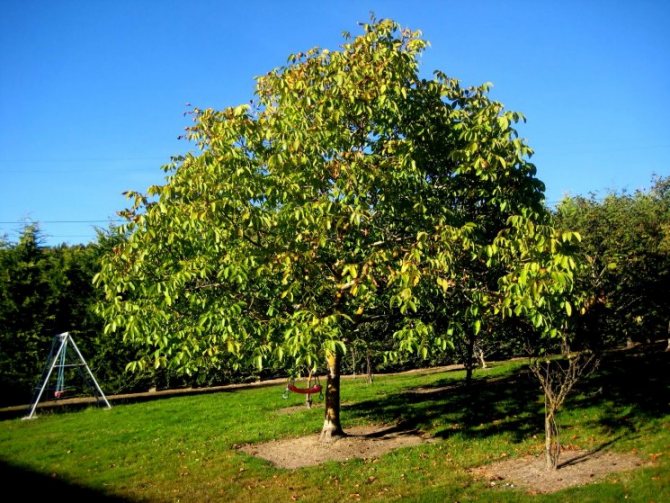

Landing in open ground
How to grow walnuts by direct planting in the ground? Store the fruits in a cool room.


In February, it is worth stratification by burying them in wet sand and covering them in the refrigerator. Plant in early spring, putting several pieces in the hole in order to select the strongest sprout later.
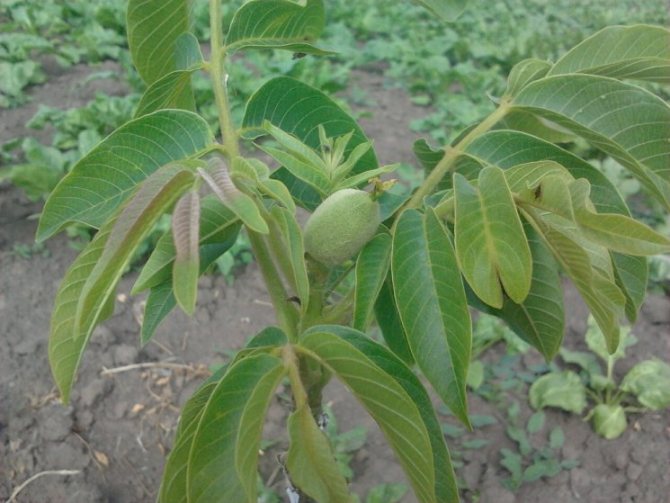

Seedlings will hatch in 10 days. The distance between crops should be 4-5 meters. Remember that after 20 years the crown will grow a lot.


